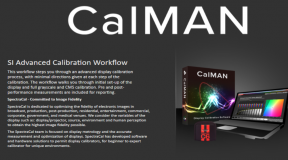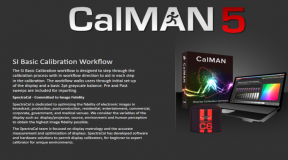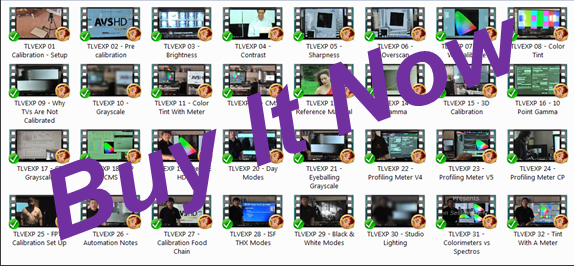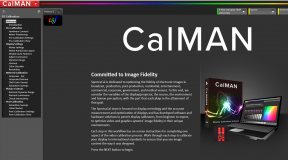 This is a series of writings that I did from 1990 to 2002 reviewing and putting to “Paper” my thoughts about the movies I collected at the time on Laserdisc and then DVD. (And there were a lot of movies too.) Within these writings are elements that ultimately paved the road to the world of professional calibration. The total collection of writings came to about 100 MB of material at the time.
This is a series of writings that I did from 1990 to 2002 reviewing and putting to “Paper” my thoughts about the movies I collected at the time on Laserdisc and then DVD. (And there were a lot of movies too.) Within these writings are elements that ultimately paved the road to the world of professional calibration. The total collection of writings came to about 100 MB of material at the time.
The writings also play out like a diary of sorts as it is possible to piece together just what type of person I was at the time. My daughter started to go through some of these and she got a good laugh out of it. Most of it was written before she was even born. I made it a rule not to change anything that I wrote when I was doing this. I would only correct for spelling and grammar and nothing else.
It’s raw and it’s also potentially offensive at times. Let the games continue. Here is Part 2. Although it falls under the title of the Aladdin laserdisc, this part is actually anything but.
[important]”AS I WALK THROUGH THE VALLEY OF THE LASERDISC, I SHALL NO LONGER FEAR ROT … FOR I HAVE DVD” PART 2[/important]
ALADDIN: Disney
| A060 |
7.0 |
1.66 |
DPL |
Trailer |
Mitsubishi Japan |
Category: Comedy / Fantasy / Musical
This one has been scheduled for a September 21, 1994 release finally. This is well after a year of its video tape release. The CAV version will be in widescreen and THX certified while the CLV version will be cropped and have the usual non-THX release. I’m betting that this one is $50 U.S. from Sight & Sound so it should end up at $40 after the discount. I have now ordered it through Sight & Sound. The disc in now on the shelves with the packaging for the CAV version considerably classier than the CLV version. The CLV version is the same as the tape release. This version has the gold foil lettering on blue and a picture of only the genie. It has arrived finally along with two other animated features … Moldiver 5 and Urotsukidoji Perfect Collection saving me a bit on the postage and customs. From some of the reviews, you would believe that this is the best pressing ever, but I beg to differ on this point. The colours are the most intense that I have seen on a disc in some time, but “Beauty & the Beast” was and still is much sharper. The image is still very good, but certain colours verge on turning into colour noise. Even on my perfectly tuned Toshiba RPTV do the images still look too saturated. The sound is great. (The video rating has been down graded from 8.0 to 7.5 to 7.0.) The accompanying trailer does not have as intense colour values and is less sharp. The big disappointment is in the aspect ratio which is something less than 1.66:1. It is closer to 1.5:1 meaning that cropping has occurred. “Beauty & the Beast” was more accurately transferred and much closer to 1.66:1. The CAV formatting makes this disc a good candidate for producing some good looking video stills. Surprisingly, this one looks much better than the CLV Pocahontas release, but the two share a similar aspect ratio. This one may be one of the first programs I get to try on the Pioneer 16:10.7 aspect ratio set. It will hopefully confirm once and for all the actual disc aspect ratio. As promised to myself, this was the first disc I put in following the “A Video Standard” (Occasionally referred to as AVS) disc. The bands were barely noticeable, but this was due solely to the vertical overscan (which I am in the process of adjusting). The 16:10.7 ratio set is sort of a cheat for this particular television because it does not offer any cinema expansion modes like its more expensive siblings. Through something called a partial stretching technique, the standard television picture has been digitally stretched to completely fill the new aspect ratio of 1.5:1. In theory, the set takes the 5% of either side and distorts this image, but a grid pattern from the A Video Standard disc shows barely noticeable distortions (if any) so bravo to the folks at Pioneer for this strange achievement. In a sense, I am glad the television set does not provide the other expansion modes as the modes are unlike those found on 16:9 counterparts. The full cinema mode as seen on the 1995-96 model expands the picture both up and down (which is desirable and what the 16:9 ratio sets do) and left and right (which is not desirable as this means cropping of vital picture information). Given this condition, I would have likely stayed with the normal cinema mode for all features versus the full cinema mode. The result of the new aspect ratio for widescreen films is a strange cinematic feeling. Existing films become wider (although this is an optical illusion and a cheat). Comparing the factory presets of the Pioneer television to the RCA projection set is actually fun as it pin points the differences in colours and boy, is there a difference. Size wise, there is only a minor difference in the two images. There is a lot of colour calibration work to be done on this Pioneer set before it produces acceptable pictures. Out of the box, the set is too red (as mentioned in one of the reviews of the 60″ set) after properly setting up the tint via AVS. Contrast and brightness as expected were too high as was the sharpness control and the regular colour setting. After opening the back of the set up, I noticed that all of the controls were available up front behind the speaker cover (having made one attempt to remove the speaker cover already). This is good news for me as the controls are all easily accessible … perhaps a little too easy for my tastes, but all the extra vacuuming will make up for it as there are too many wood chips. Convergence out of the box is excellent unlike the RCA projection set. The RGB drivers are clearly marked as are the red/blue bias and the blue/green bias controls (although they are labeled as drivers?). The Horizontal and Vertical size controls are also clearly marked. The end result of all the adjustments may be a picture similar to the RCA, but with much better convergence on the edges and less distortion. On an initial comparison, the colour scheme of the RCA is much better than the Pioneer’s. The end product is to get the Pioneer to look exactly like the RCA. Although the set does not have an S-Video input, the new setup accounts for this as one input comes directly from the video selector to the set (Laser) and the second input comes via S-Video through the Mitsubishi S machine converted to composite again. The Pioneer set has the potential to be the best set I have ever seen (Ha, ha, ha, ha, ha). The PIP functions are finally more elaborate than what I’ve encountered in the past. The inset picture has no border and source can be swapped. The “multi” function gives a selectable four or nine picture strobe or channel scan, but the resulting image is very digitized. The effect is neat as the moving picture can be placed anywhere among the nine/four frames. The built in large still frame feature also permits freezes on all input sources.





